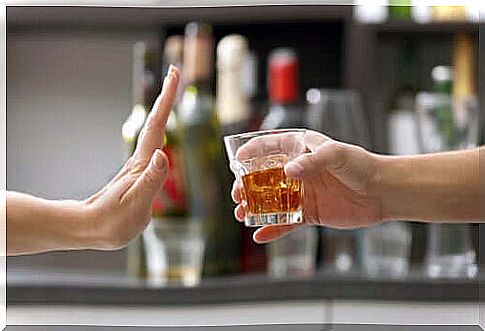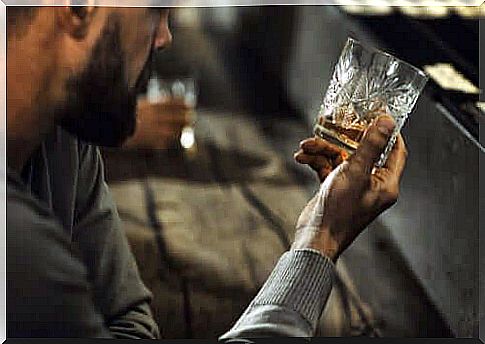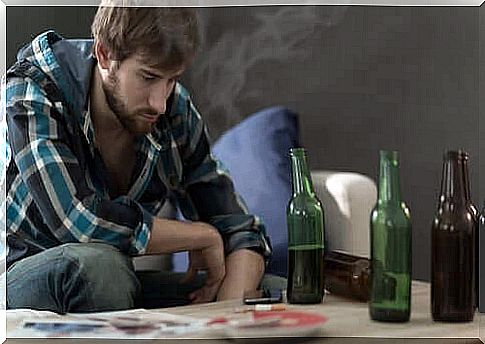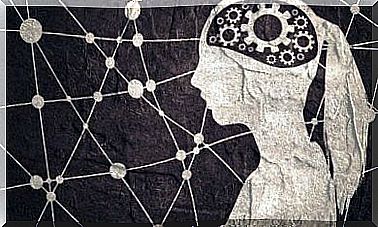Indicated Psychological Treatments For Alcoholism

Most psychological treatments indicated for alcoholism are based on the cognitive-behavioral model. He assumes that this substance is a powerful reinforcer capable of sustaining alcohol self-administration.
Thus, the cognitive-behavioral model offers an alternative to the classic approach to alcoholism as a disease and, therefore, to the medical model.
The ultimate goal of psychological treatments indicated for alcoholism is to decrease a person’s preference for alcohol. Thus, they increase their preference for other activities that allow them to maintain adaptive functioning in the long term.
Another objective could be, depending on the patient, their personal resources and the family or social environment, to train a non-problematic use of the substance. This is what has been called ‘controlled drinking’.
Currently, in psychological treatments for alcoholism, we can differentiate two major blocks of intervention. There are those who aim at abstinence and those who aim to achieve non-hazardous consumption, in a controlled manner. We will describe them below.

Psychological treatments indicated for alcoholism oriented towards abstinence
Among the psychological treatments indicated for alcoholism that aim to prevent the patient from drinking, the scientific review indicates the following:
Training in social skills or self-control
It is used in patients who do not have adequate interpersonal and intrapersonal skills or who cannot control their emotional state other than through alcohol.
It was observed that addicts consume less alcohol if, in a stressful social situation, they have an alternative coping strategy.
An example could be the manual by Monti et al (2002). It provides social strategies for both the patient and their support network, without resorting to consumption.
community strengthening approach
The patient is instructed to change the lifestyle related to substance use. It also includes techniques such as problem solving, family behavior therapy, social counseling and job search training.
It can also be used for a controlled drinking strategy.
Marital Behavior Therapy
It consists in making the consumption of alcohol stop being a reinforcer so that abstinence is the goal.
For this, it is necessary to be involved in pleasant activities, especially those that do not involve drinking, together with the partner.
Aversive Therapy
The goal is to reduce or eliminate an individual’s craving for alcohol. Different stimuli or images are used so that a negative conditioned response is reached for the drink-related signals (color, smell…).
Different aversive stimuli were used, from the classic electric shock with Kantorovich in 1929 to chemical aversion or through imagination.
An example of this treatment could be the ‘covert sensitization’ proposed by Cautela in 1970. Generally, 8 sessions are enough to obtain results.
Relapse prevention
The best known is that of Marlatt and Gordon. The client is challenged to take responsibility for his behavior change and, therefore, for the maintenance of said change, once obtained.
In addition, relapse prevention must take into account the increase of their coping strategies in high-risk stress situations.
Treatments oriented to ‘drinking in a controlled way’
They are used when a person does not want to achieve complete abstinence or does not have physical problems. The most representative program of this group of psychological treatments in alcoholism is Sobell & Sobell.
The Sobell & Sobell Program aims to ensure that problem drinkers do not become chronic.
Therefore, it fits into a self-management approach, since the objective is to make a brief intervention, in which the individual puts into practice many of the strategies that are taught to him.

The Sobell & Sobell program lasts four weeks and is carried out on an outpatient basis. So it’s not very intensive in the clinic, but it has a lot of ‘homework’. He intends for the person to finally bring about their own change.
His recommendations include not consuming more than 3 units of drink a day and not drinking more than 4 days a week, with the aim of reducing the level of alcohol tolerance.
In addition, other points are not drinking in high-risk situations, not drinking more than one beverage unit per hour, and delaying the time between the decision to drink and drink by 20 minutes.
It is a program in which training in problem solving and relapse prevention becomes very important. In this way, the person defines the situations related to consumption in their life and develops strategies to deal with them.
Conclusion
For both complete abstinence and controlled consumption, the ultimate goal is for the patient to learn alternative strategies that limit their impulses to drink alcohol.
This can be achieved by learning social skills to say no to people who encourage us to drink, or by effectively solving problems that were previously faced with alcohol.
In this sense, the controlled consumption program is of great importance nowadays, due to the increase of young people who face their problems and emotions by drinking excessively on weekends.
It is critical to ensure that these young people do not become pathological drinkers and learn effective ways to manage their lives that do not involve drug use.









